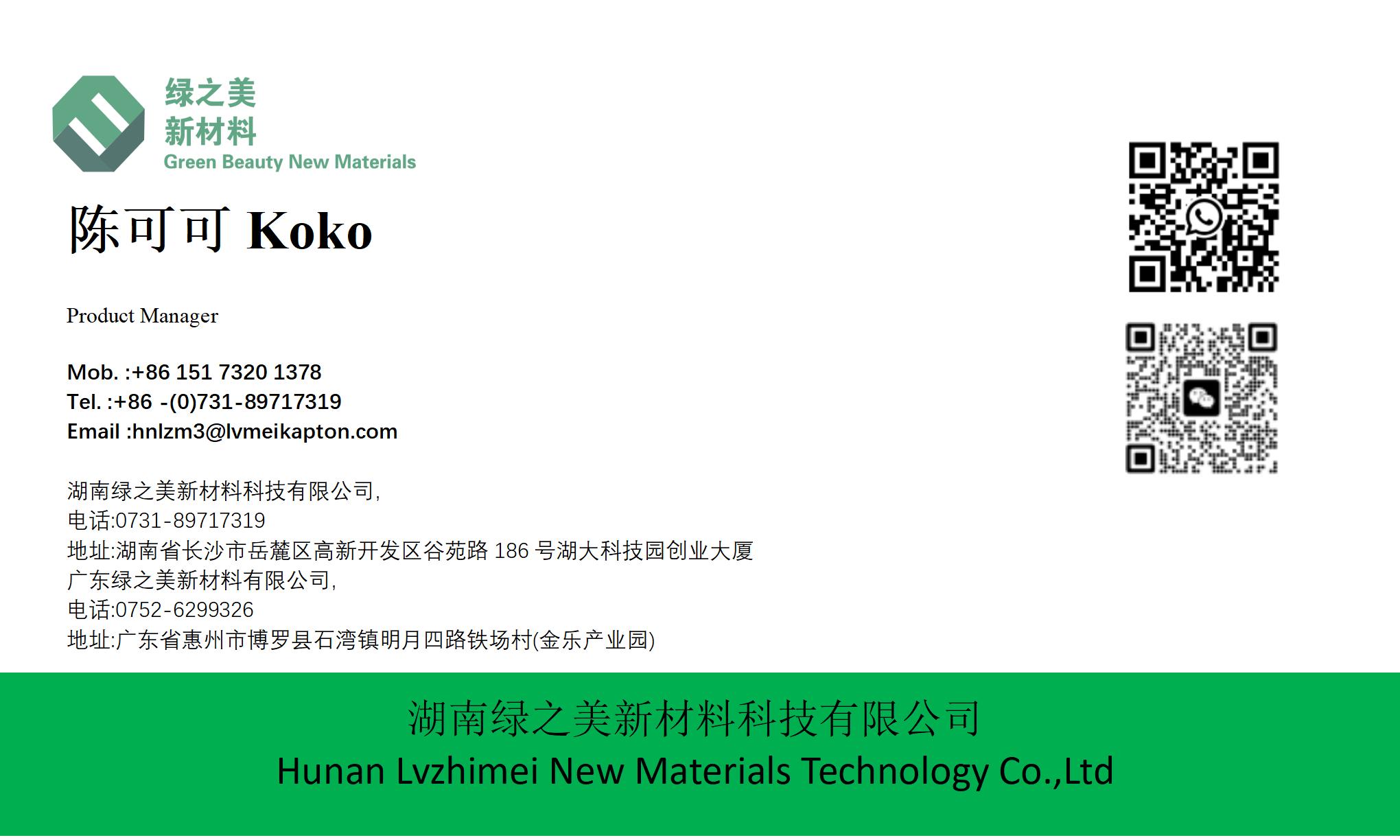hnlzm@lvmeikapton.com
+86 13787123465


Hunan Lvzhimei New Material Technology Co., Ltd.


NameDescriptionContent
Where to Implement Brown Circuit Board High Temperature Tape for Maximum PCB Protection? |https://www.lvmeikapton.com/
Source:
|
Author:Koko Chan
|
Published time: 2025-07-22
|
12 Views
|
Share:
Printed Circuit Boards (PCBs) are subjected to severe thermal stress and contamination risks during manufacturing. High-temperature processes such as wave soldering, reflow soldering, and component mounting expose the board to temperatures exceeding 250°C, potentially causing deformation, oxidation, and solder joint defects. Additionally, contaminants like solder splashes, flux residues, dust, and metal particles can lead to short circuits, insulation failures, and decreased reliability.
Brown circuit board high-temperature tape, characterized by its thermal resistance, strong adhesion, and contaminant barrier properties, plays a vital role in mitigating these risks. It provides a protective layer that ensures PCB integrity and enhances manufacturing yield.
Brown circuit board high-temperature tape, characterized by its thermal resistance, strong adhesion, and contaminant barrier properties, plays a vital role in mitigating these risks. It provides a protective layer that ensures PCB integrity and enhances manufacturing yield.

1. Introduction1.1 Challenges in PCB Manufacturing and Importance of High Temperature TapePrinted Circuit Boards (PCBs) are subjected to severe thermal stress and contamination risks during manufacturing. High-temperature processes such as wave soldering, reflow soldering, and component mounting expose the board to temperatures exceeding 250°C, potentially causing deformation, oxidation, and solder joint defects. Additionally, contaminants like solder splashes, flux residues, dust, and metal particles can lead to short circuits, insulation failures, and decreased reliability.Brown circuit board high-temperature tape, characterized by its thermal resistance, strong adhesion, and contaminant barrier properties, plays a vital role in mitigating these risks. It provides a protective layer that ensures PCB integrity and enhances manufacturing yield.
2. Characteristics of Brown Circuit Board High Temperature Tape2.1 High Temperature ResistanceThe tape withstands prolonged exposure to temperatures up to 260°C without melting, warping, or adhesive degradation. This makes it suitable for processes like wave soldering (operating at 240-260°C) and reflow ovens. Its stability is achieved through materials like polyimide (PI) or reinforced Teflon coatings, which maintain mechanical strength and dimensional stability under extreme heat.
2.2 Strong Adhesion AssuranceThe tape features a specially formulated adhesive system that maintains its bonding strength even after thermal cycling. The adhesive exhibits high initial tack and long-term retention, preventing peel-off during thermal shocks. This ensures consistent coverage of critical areas, such as connectors and soldering zones.
2.3 Contaminant Barrier PerformanceThe tape acts as an effective barrier against solder splashes, flux residues, and environmental contaminants. Its smooth surface and tight adhesion seal off exposed regions, preventing foreign particles from adhering to the PCB. This is crucial in preventing defects like bridging, corrosion, and signal interference.
3. Key Application Areas3.1 Gold Finger Connector ProtectionDuring wave soldering, gold fingers (edge connectors) are vulnerable to solder contamination, leading to contact resistance and electrical failures. High-temperature tape is applied to cover the connector edges, shielding them from molten solder.Figure 3.1: Protection of Gold Fingers with High Temperature Tape during Wave Soldering(Insert a diagram showing the tape wrapped around the gold fingers on a PCB during wave soldering process.)
3.2 BGA Pad Coating ProtectionDuring conformal coating application for BGA pads, accidental overspray can affect pad functionality. Applying tape around the BGA area prevents coating materials from contaminating solder joints.Figure 3.2: Application of High Temperature Tape for BGA Pad Coating(Illustrate a PCB with BGA pads surrounded by tape prior to coating application.)
3.3 Test Point Protection during In-Circuit TestingTest points are prone to contamination and mechanical damage during probe contact. Temporary tape coverage maintains point cleanliness, ensuring accurate testing results.Figure 3.3: Test Point Protection with High Temperature Tape(Display a PCB with tape covering selected test points, with an arrow indicating the peelable section for testing access.)
4. Practical Case Study4.1 Case of a Major Electronics ManufacturerFoxconn's Shenzhen plant experienced significant yield losses due to gold finger contamination in wave soldering. After implementing high-temperature tape protection:
●
Gold finger contamination rate decreased from 8% to <1%.
●
First-pass yield improved from 95% to 99.2%.
●
Rework costs reduced by 40%.Table 4.1: Comparison of Production Yield Before and After Using High Temperature Tape| Metric | Before Tape Implementation | After Tape Implementation ||-----------------------|--------------------------------|--------------------------------|| Gold Finger Contamination Rate (%) | 8 | <1 || First-Pass Yield (%) | 95 | 99.2 || Rework Cost Reduction (%) | N/A | 40 |
5. Considerations for Use5.1 Tape Model Selection
●
Wave Soldering: Choose PI-based tapes with high thermal stability (e.g., Kapton).
●
Coating Protection: Opt for thin, conformable tapes (e.g., PET with silicone adhesive).
●
EMI Shielding Environments: Use nickel-coated tapes for enhanced shielding.5.2 Mounting Operation Requirements
●
Apply tape at 15-30°C ambient temperature.
●
Preheat PCB to 40-50°C for improved adhesion.
●
Use a roller to apply even pressure, avoiding air pockets.5.3 Adhesion Maintenance
●
Clean PCB surfaces with isopropyl alcohol before application.
●
Avoid rapid temperature changes during thermal processes.
●
Replace tape if signs of degradation (e.g., discoloration) occur.
6. Conclusion6.1 Summary of the Critical Role of High Temperature TapeBrown circuit board high-temperature tape is an indispensable tool in modern PCB manufacturing. By protecting vulnerable areas from thermal damage and contamination, it boosts product reliability, reduces defects, and streamlines production efficiency. Its application in critical zones—gold fingers, BGA pads, and test points—demonstrates its versatility and cost-effectiveness. As electronics become increasingly miniaturized and high-performance, the role of such protective materials will continue to grow.


Hunan Lvzhimei New Material Technology Co., Ltd.
Quick Links
Product Categories
© 2024 Hunan Lvzhimei New Material Technology Co., Ltd.All Rights Reserved. Designed by Erge
0731 - 89717319
hnlzm@lvmeikapton.com
+86 13787123465
Room 502, Chuangye Building, No186, Guyuan Road, High-Tech District, Changsha, Hunan, China
CONTACT



